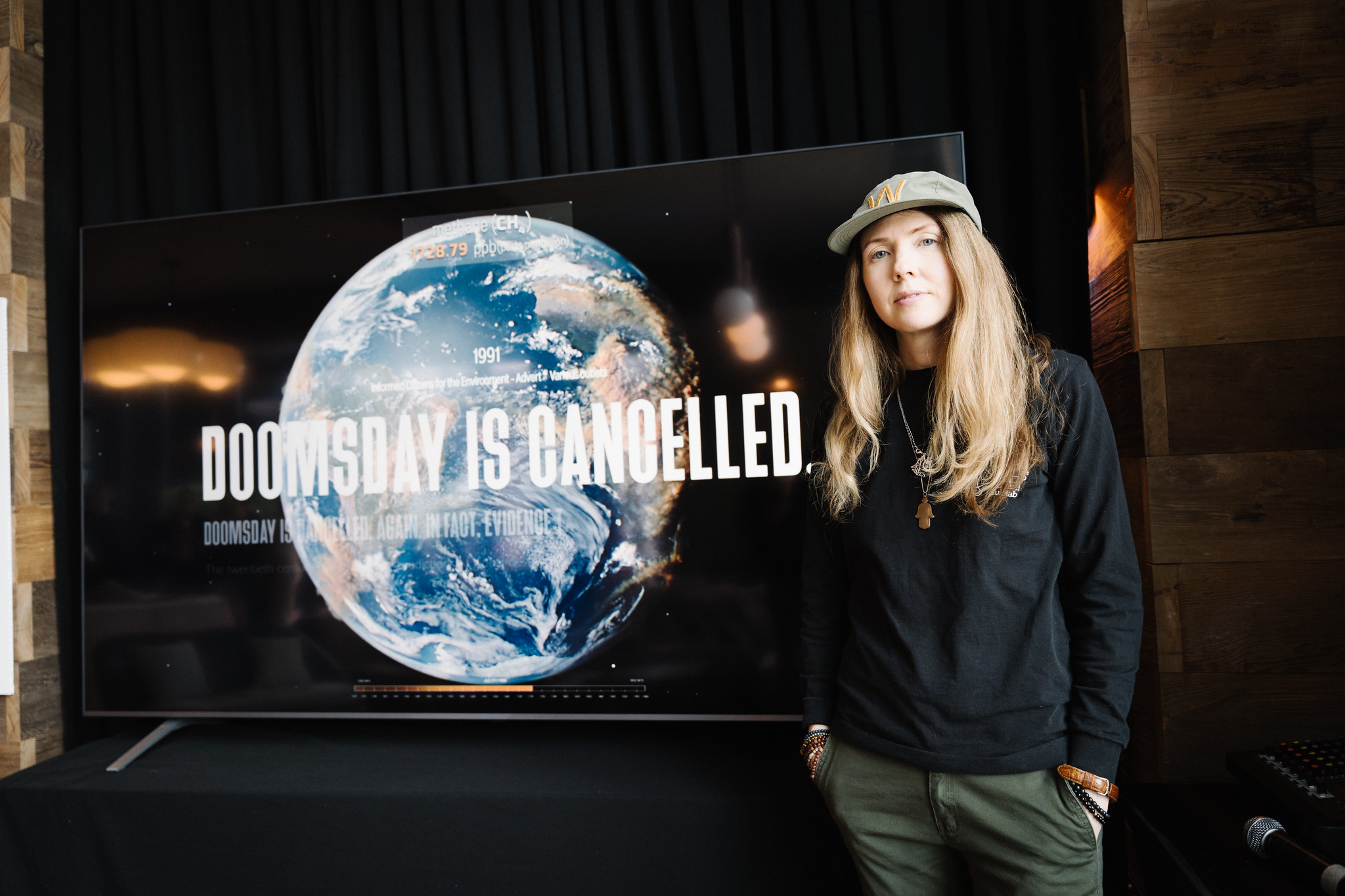The Prix Ars Electronica, the most time-honoured media art competition, has always functioned as a sensitive instrument to capture the spirit of the times since its inception in 1987. In 2024, there were 2,950 entries from 95 countries in the following categories: New Animation Art, Interactive Art +, and u19-create your world. In addition, a special AI in ART Award was established this year, focusing on human creativity made possible by the use of AI, from among the entries in all categories.

Lentos Kunstmuseum Linz
WED Sept. 4 – SUN Sept. 8, 2024
Admission with FESTIVALPASS+, FESTIVALPASS, DAYPASS
-
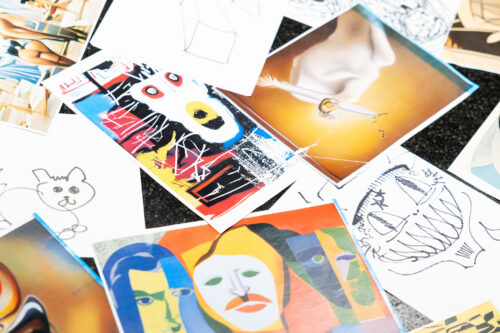
Conversations Beyond the Ordinary
Jan Zuiderveld (NL)
Conversations Beyond the Ordinary transforms several everyday office appliances into entities with their own consciousness. Engage with these AI-imbued objects: convince the coffee machine to put effort into you, collaborate with the photocopier and converse with your possessions through the microwave.
-

G80
Fragmentin (CH)
G80 is an interactive installation that proposes a contemporary interpretation of Richard Buckminster Fuller’s World Game: a strategy simulation tool inspired by War Games, which aimed at an equitable distribution of resources on a planetary scale. Created in the cybernetic era in the early 1960s, it embodies the promise of computation and mathematical models for…
-

I’m Feeling Lucky
Timothy Thomasson (CA)
I’m Feeling Lucky is a real-time generative animation featuring historically and geographically ambiguous landscapes, drawing from the perceptual and historical frameworks of 19th-century panorama paintings. The infinite landscape is populated with thousands of 3D figures from around the world, sourced from Google Street View.
-
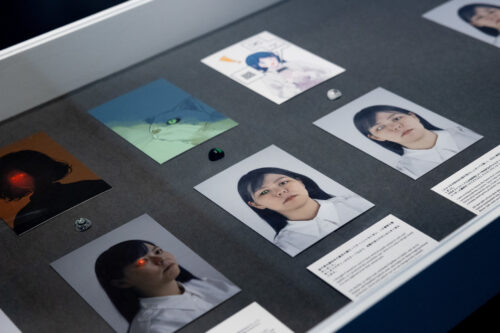
If You Have Starry Skies in Your Eyes
Rib (JP)
In Japan, prosthetic eyes mimic real eyes, following societal norms and industry standards. Official manufacturers do not produce custom prosthetic eyes. My project challenges this by creating prosthetic eyes that emphasize individuality and self-expression. These eyes light up, making them visually striking and encouraging new perceptions about prosthetic eyes. This approach aims to leave a…
-
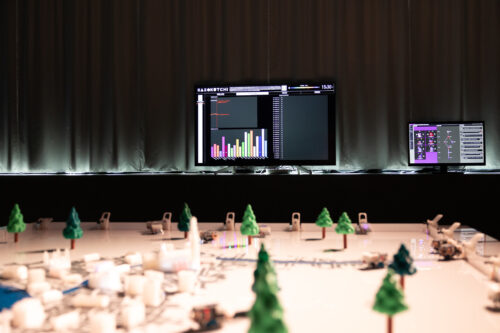
Kazokutchi
So Kanno (JP), Akihiro Kato (JP), Takemi Watanuki (JP)
Kazokutchi is a project of reproductive digital artificial life that uses a swarm of physical robots as its host. It consists of a family of “Kazokutchi,” digital artificial lives that inhabit each movable robot house. Each Kazokutchi is linked to an NFT with its own name, date of birth, family name, and gene. The cycle…
-
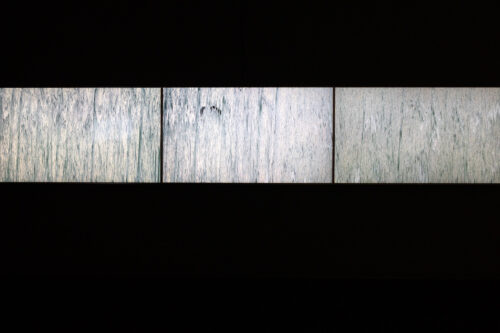
Mid Tide #3
Ryu Furusawa (JP)
Mid Tide#3 captures the actual view through two lenses, namely camera and computer. The images change very slowly. Space-time as written within the images transforms, just as the tide gradually erodes the landscape. The incoming waves during this transformation unknowingly sweep the viewer’s perception into a unique space-time flow within the image. This immersive experience…
-
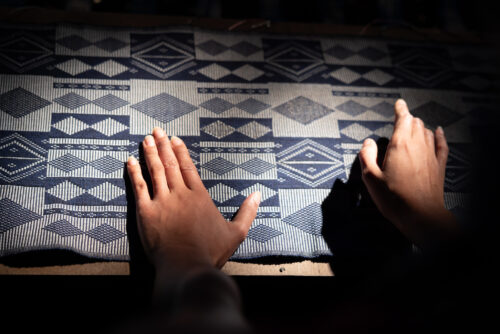
Nosukaay
Diane Cescutti (FR)
Nosukaay is an interactive installation, a machine that combines a West African loom and a computer. With it, the viewer can use a manjak woven fabric as a keyboard to explore a video game blending texts, 3D images, and images shot in Aïssa Dione Tissus’ studio and Boulevard Canal4’s outdoor weaving studio in Dakar, Senegal.…
-
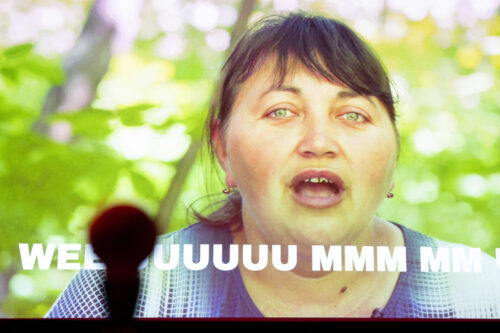
REPEAT AFTER ME, 2022
Open Group – Yuriy Biley (UA), Pavlo Kovach (UA), Anton Varga (UA)
In the work Repeat After Me we see refugees from the East of Ukraine who, fleeing the threat of war, found shelter in a temporary camp in Lviv. They share their experience of the sounds of war.
-
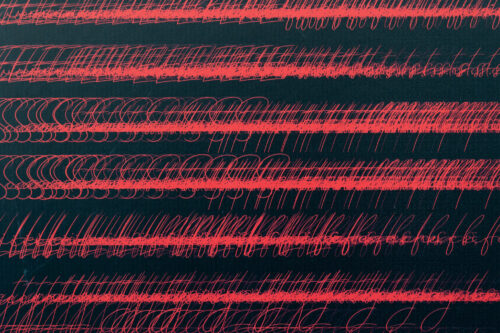
REPETAE
Sasha Stiles (US)
REPETAE is a hybrid language art series that fuses algorithm and poetry to explore repetition as a powerful tool for generating new meanings, emotions and insights. It is an ode to the transformative power of poetry, generative art and AI, inviting audiences to consider the endless possibilities that arise from revisiting, reimagining and reinventing the…
-

Smoke and Mirrors
Beatie Wolfe (GB)
Smoke and Mirrors uses art to communicate six decades of climate data, specifically rising methane levels, set alongside the verbatim advertising slogans deployed by the Big Oil industry to “Deny, Doubt and Delay” the climate data and awareness through the decades.
-
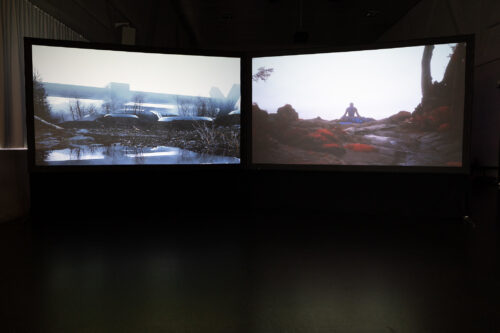
Stained
Jeremy Kamal (US)
Stained is a CGI short film set in Mojo, a world where Black culture transforms American landscapes. The film follows a sensitive tea master named Demetrius, a member of the Crimson Needles gang, which uses colored flora to mark territory. Haunted by the voice of his elder, Bump, Demetrius relives the memory of being reprimanded…
-
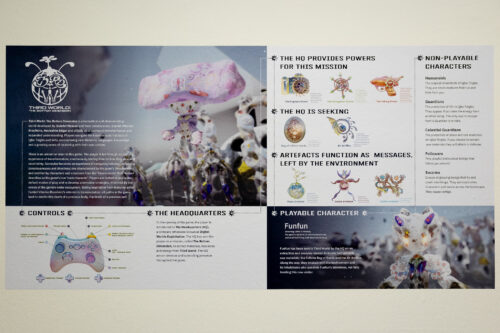
Third World: The Bottom Dimension
Gabriel Massan (BR)
Third World: The Bottom Dimension is an experimental exhibition, video game and web3 tokens led by artist Gabriel Massan (b.1996, Nilópolis, Brazil) with Serpentine Arts Technologies. The project convenes and platforms a vital generation of interdisciplinary, queer, Afro-diasporic Brazilian artists.
-
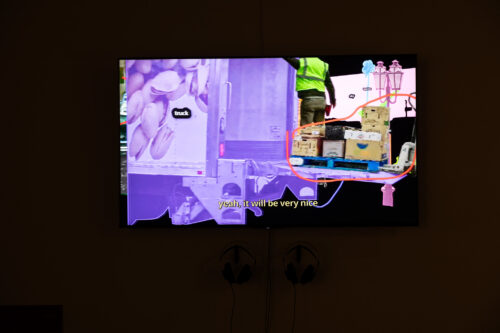
Unknown Label
Nicolas Gourault (FR)
Unknown Label is an experimental documentary which explores the daily reality of online micro-workers from the Global South who annotate images for self-driving cars. It investigates the power asymmetries and neocolonialist exploitation involved in the human labor necessary to train AI systems. Unknown Label reveals the hidden people that help shape how machines see the…
-

Washed Out “The Hardest Part”
Paul Trillo (US)
A trip and a fall down memory lane. A continuous push forward through time, tracking the relationship of a couple from middle-school into the afterlife. This is the first officially commissioned music video collaboration between a music artist and filmmaker made with OpenAI’s Sora video model. This video is about learning to let go of…
In the New Animation Art category, Beatie Wolfe’s Smoke and Mirrors, which vividly contrasts the marketing campaign of the oil industry with the alarming rise in atmospheric methane levels, based on the iconic “Blue Marble” photo of the Apollo 17 crew taken in 1972, won the Golden Nica. While many works only make use of game engines and generative AI, the jury gave special recognition to an animation work that uniquely combined these new technologies to create an artistic message that encourages social discussion.
In the Interactive Art + category, Diane Cescutti won the Golden Nica for her multilayered interactive installation work Nosukaay, which combines the Manjak loom of West Africa with the computer. Through the narrative of Nosukaay, the machine deity, we garner hints for passing on wisdom, tradition, and spirituality to the future. Embodying techno-diversity and promoting pluralistic and diverse dialogue was highly praised as an important element of interactivity for future.
While AI is being used in many works in all categories, Paul Trillo won the AI in ART Award—Golden Nica for Washed Out “The Hardest Part”, the first official music video created using Sora, OpenAI’s text-to-video model. It demonstrated a turning point with generative AI becoming more common in the creative process, and highlighted the important role that artists will play in future creative work.
This year’s Prix Ars Electronica award-winning works visualize the simultaneous creative actions of artists and inspire us to imagine a dynamic, living Earth. Our Blue Marble is not standing still.
Text: Emiko Ogawa
The Prix Ars Electronica, organized by Ars Electronica Linz GmbH & Co KG, is made possible by support from the City of Linz. Special Thanks for additional support go to Austrian Federal Ministry for European and International Affairs, Austrian Federal Ministry of Education, Science and Research and OeAD. In collaboration with ORF OÖ.

